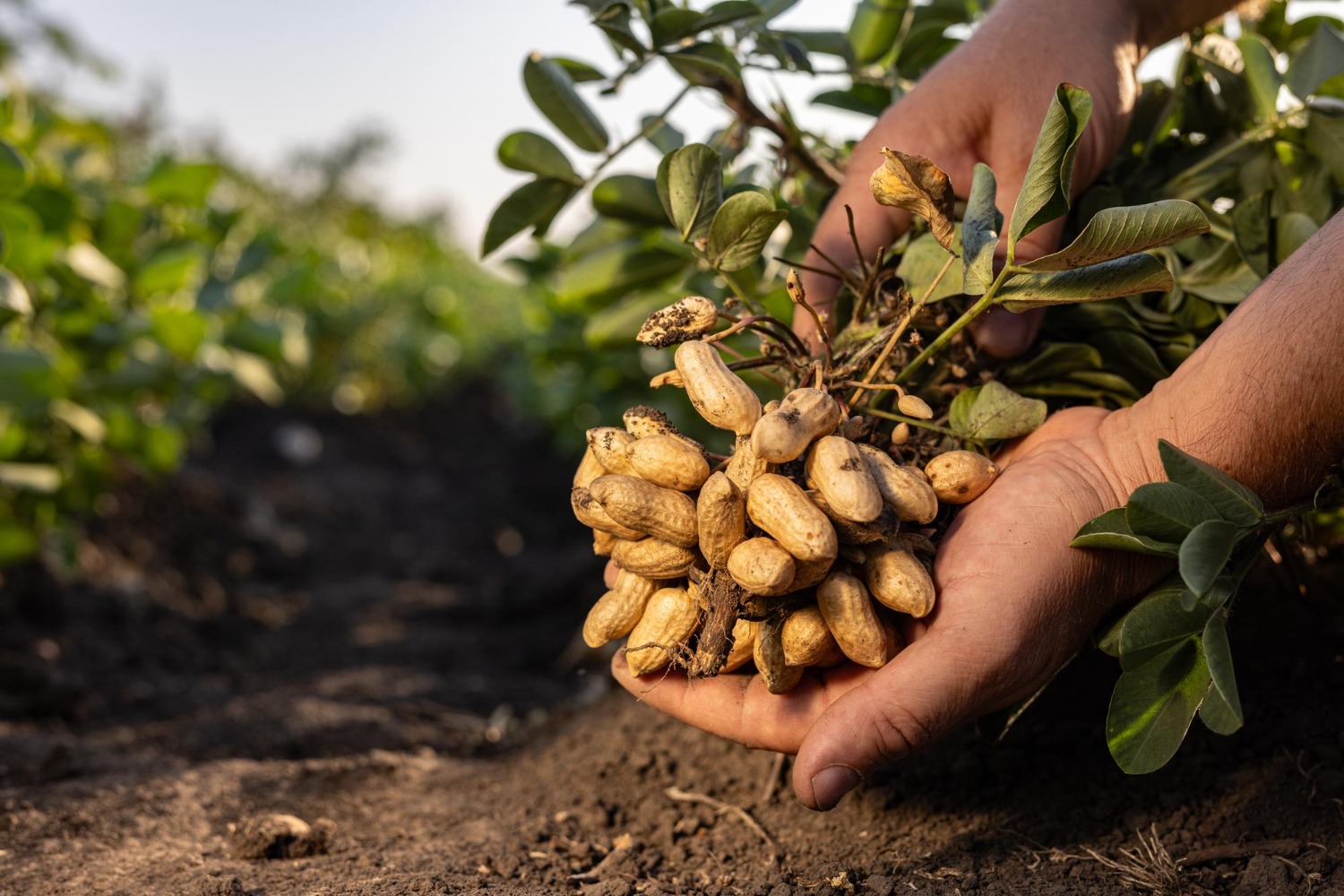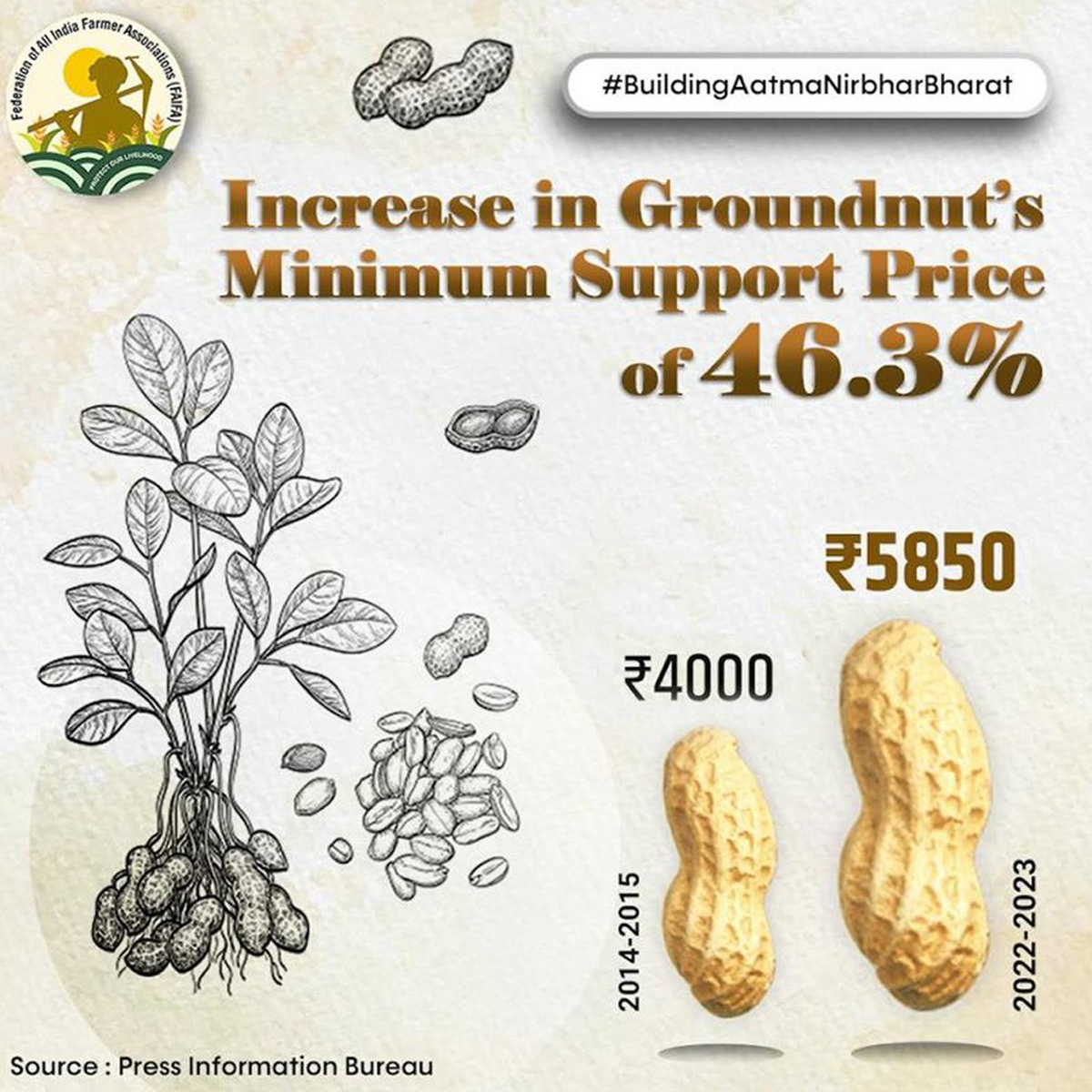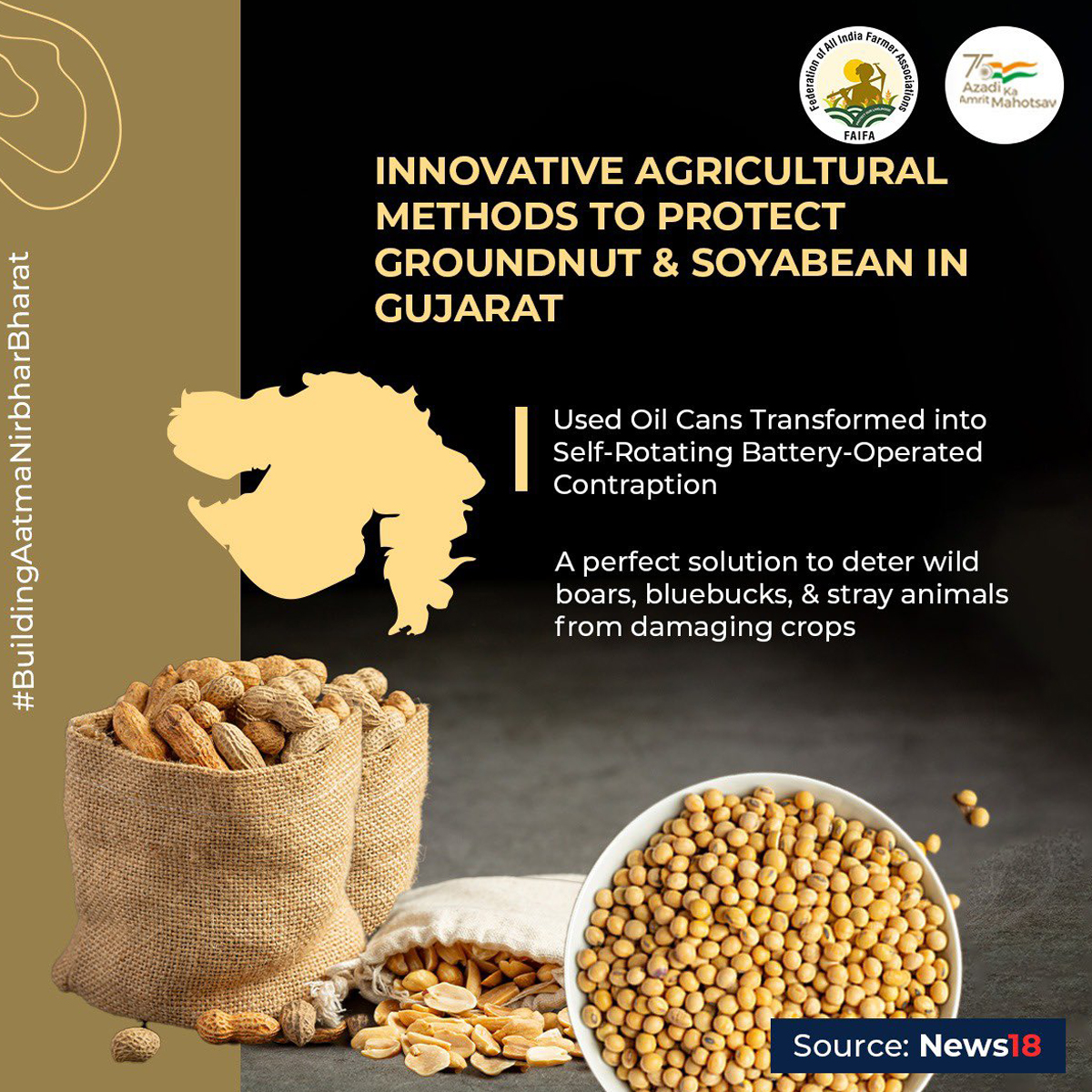Groundnut
Groundnut or Peanut (Arachis hypogaea) is a species in the legume or “bean” family. The crop is believed to be of South American origin. China, India, Nigeria, USA, Indonesia, Argentina, Sudan, Senegal and Myanmar are the major groundnut-producing nations in the world.
In India, groundnut first reached the east coast of the then Madras province and was first cultivated in Mysore state in 1800 AD. India is the second largest producer of groundnuts in the world.
Groundnut is known by many other names such as earthnuts, ground nuts, goober peas, monkey nuts, pygmy nuts and peanuts. Despite its name and appearance, the peanut is not a nut, but rather a legume.

Groundnut is a significant oilseed crop and is considered ideal for cultivation in tropic regions of India. It plays a major role in bridging the vegetable oil deficit in the country. Groundnuts in India are available throughout the year due to a two-crop cycle harvested in March and October. Groundnuts are important protein crops in India grown mostly under rain-fed conditions.
Climatic Requirements
The crop can be grown successfully in places receiving a minimum rainfall of 500 mm and a maximum of 1,250 mm. A temperature range of 25–30°C is considered optimal for plant growth and flower production.
Soils
Ground nut is raised in a sandy loam as well as in drained sandy clay loam soil. Deep well-drained soil with pH of 6.5-7 as well as having great fertility are perfect for ground nut cultivation. Heavy and stiff clays are unsuitable for groundnut cultivation as the pod development is hampered in these soils.
Sowing Time & Methods
The crop grows in both Kharif and Rabi seasons. The Kharif season has a share of more than 75% of the total production. The rainfed Kharif crop is sown with the advent of monsoon from May to July. Rabi ground nuts are grown in the southern states during November-December. Summer ground nuts are shown in the states of Gujarat, Maharashtra and Madhya Pradesh during January-February.
In India, groundnut is sown using various methods such as seed drills, hand dibbling, or behind a traditional country plough. Tractor-mounted groundnut planters are also used for efficient sowing. The Broad Bed and Furrow (BBF) method is particularly beneficial under rainfed conditions, as it enhances moisture conservation and improves yield.
Growing States
Gujarat is the largest producer of groundnuts in the country, which is followed by Rajasthan, Tamil Nadu, Andhra Pradesh, Karnataka, Madhya Pradesh, Maharashtra and West Bengal. Gujarat alone accounts for 40% of total groundnut produced in the country.
Varieties
Indian groundnuts are available in different varieties such as Bold or Runner, Java or Spanish and Red Natal. The main Groundnut varieties produced in India are Kadiri-2, Kadiri-3, BG-1, BG-2, Kuber, GAUG-1, GAUG-10, PG-1, T-28, T-64, Chandra, Chitra, Kaushal, Parkash, Amber etc.
Water Management
Groundnut is primarily cultivated under rainfed conditions, with only about 20% of the total area being irrigated. Irrigation is mostly practiced during the rabi and summer seasons. A good crop of rabi groundnut can be obtained with a maximum of 8-9 irrigations while summer groundnut requires about 11-12 irrigations. The crop’s water consumption and irrigation needs vary depending on factors such as soil type, season, climate, variety, and management practices.
Weed Control
Groundnut is highly susceptible to weed competition due to its slow initial growth and low plant height, leading to significant yield losses. Effective and economical weed control can be achieved by incorporating Alachlor or Fluchloralin into the soil before sowing at 1.5 kg active ingredients per hectare, or by applying Pendimethalin as a pre- emergence herbicide at 1.0 kg active ingredients per hectare, combined with two intercultures at 30 and 45 days after sowing.
Glimpses of our Social Media Posts






<h5 class=”mb-0″ style=”text-align: center; padding: 0.05px; </h5>
Groundnut – All India Area and Production
|
|
2019-20 |
2020-21 | 2021-22 | 2022-23 | 2023-24 |
| Area (Million Hectares) |
4.8 | 6.0 | 5.7 | 5.0 | 4.7 |
| Production (Million Tonnes) |
9.9 | 10.2 | 10.1 | 10.3 | 10.2 |
Source: Agriculture Statistics at a Glance – 2023, Ministry of Agriculture & Farmers Welfare, GoI
Groundnut Exports from India
|
Year |
2019-20 |
2020-21 | 2021-22 |
2022-23 |
2023-24 |
|
Value |
5,096.38 | 5,380.24 | 4,696.98 | 6,735.35 | 7,135.35 |
Source: Department of Commerce, Ministry of Commerce and Industry, Govt. of India
https://tradestat.commerce.gov.in
Indonesia, Vietnam, Philippines, Malaysia and Thailand are the major export destinations for groundnut during the year.
References:
- Handbook of Agriculture, Indian Council of Agricultural Research, Ministry of Agriculture and Farmers’ Welfare, GoI
- Textbook of Field Crops Production – Commercial Crops, Indian Council of Agricultural Research, Ministry of Agriculture and Farmers’ Welfare, GoI
- Tamil Nadu Agricultural University (TNAU) Agritech Portal https://agritech.tnau.ac.in/index.html
- https://apeda.gov.in/apedawebsite/SubHead_Products/Ground_Nut.html
